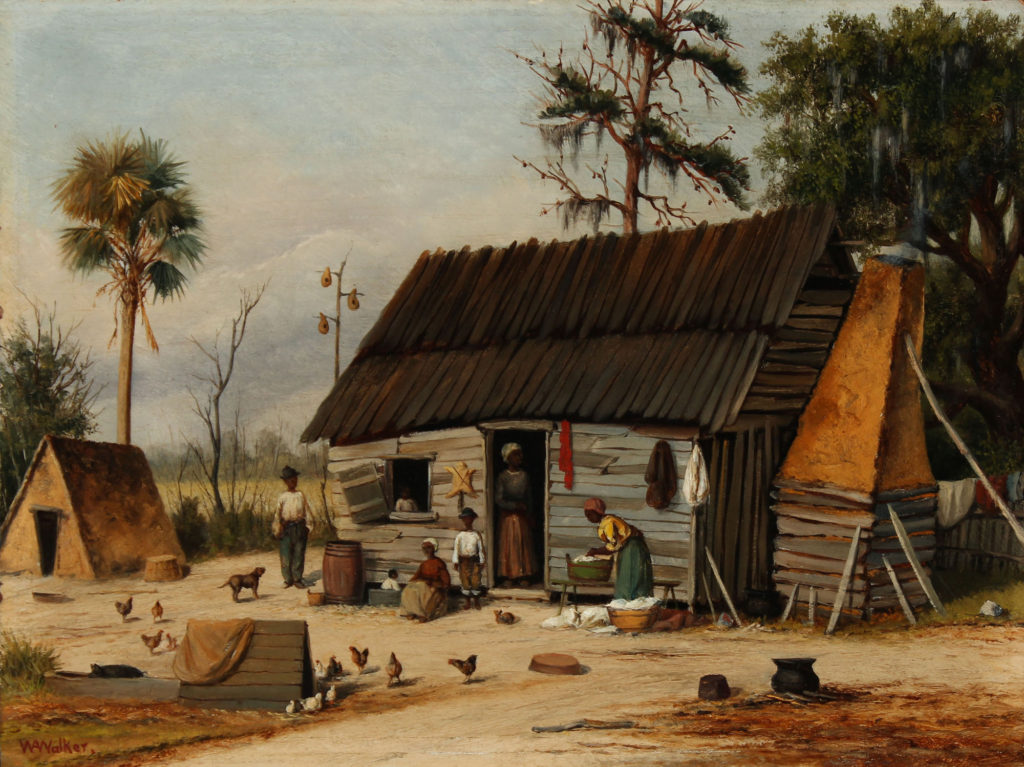
oil on board 9 x 12 in.
On the Plantation by William Walker
William Aiken Walker, a genre painter renowned for his depictions of plantations, cotton fields, African Americans, and dock scenes, left an enduring mark on Southern art. Born in Charleston, South Carolina, in 1838, Walker’s artistic journey began early in life, with his first painting completed at the age of twelve. Remarkably, he continued to paint until his death in 1921. Despite a brief period of study in Dusseldorf during the 1860s, Walker was largely self-taught.
As the son of a prominent cotton agent, Walker’s art reflected his Southern roots. A convivial and sociable individual, he often regaled friends with stories of his travels throughout the South, including Florida, Galveston, Texas, and the Carolinas. While influenced by European artistic subjects and styles, Walker’s primary inspiration came from his firsthand experiences in the American South.
In 1884, Currier and Ives published several of Walker’s color lithographs, including notable pieces like “Cotton Plantation on the Mississippi” and “The Levee, New Orleans.” This marked a turning point in his recognition as an artist. During the Civil War, Walker remained in Charleston, contributing to the Confederate cause by joining the Confederate Engineer Corps, where he created sketches and maps.
From 1876 to 1905, New Orleans became Walker’s adopted home. His close association with Everett B. D. Fabino Julio led to an attempt to establish an art league. Though the league did not materialize, it paved the way for the formation of the Southern Art Union in 1880, the earliest such association in New Orleans.
The early 1880s marked Walker’s most prolific period, during which he painted numerous pictures depicting poor rustic blacks. Particularly drawn to North Carolina, he spent many summers at Arden Park Lodge in the Asheville area until its unfortunate destruction by fire in 1919. Charles Beale of Arden, who became Walker’s patron, enabled him to become a regular artist-in-residence, showcasing and selling his paintings at the lodge, often depicting scenes of blacks working on tobacco farms.
Walker’s art, detailed and sometimes lacking emotional depth, benefited from his occasional use of a camera. After 1890, his focus shifted toward an increasing number of landscapes. Beyond his painting talents, Walker was a multi-talented individual, known to sing, play the violin and piano, and compose poetry in both English and French. One of his art students, Blanche Blanchard, emulated his style, copying some of his work in her own creations. Walker’s legacy endures as a distinctive voice in Southern genre painting.